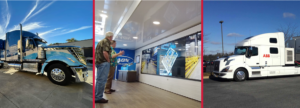What to expect with refrigerant phase-outs in HVAC
Chris Plummer, Product Manager, Gil-Bar Industries
If you’re a professional within the HVAC industry, you know that the EPA is constantly changing codes and regulations to be better to our planet. Sometimes, those changes can seem hard to understand or adapt to, but knowing the true impact of your equipment can help. Lately, the EPA has made changes to ensure equipment is not using “high global-warming-potential” (or GWP) refrigerants. Within the scientific community, there is a fear that the high GWP refrigerants can leak and in turn add to Ozone depletion. As a result, we’ve seen certain refrigerants in the industry begin to “phase out.”
But what is Global Warming Potential and what are the other determining factors for a “sustainable” refrigerant? Well, it turns out there are three main criteria:
Global Warming Potential (GWP): The metric used to compare the global warming impact of greenhouse gases compared to a reference gas, Carbon Dioxide (CO2), where its GWP is equal to 1. For example, R-134a refrigerant has a GWP rating of 1,430, indicating that it has 1,430 times the 100-year warming potential of the same volume of CO2. R-410a has a rating of 2,088, indicating that it has 2,088 times the 100-year warming potential of the same volume of CO2. In this case, R-134a would be considered a more sustainable refrigerant.
Toxicity: Relative toxicity to humans, broken into two classes:
- Class A (Lower Toxicity): Refrigerants for which toxicity has been identified at concentrations less than or equal to 400 parts per million (PPM).
- Class B (Higher Toxicity): Refrigerants for which toxicity has been identified at concentrations greater than 400 parts per million (PPM).
Flammability: There are four classes of flammability (From Figaro):
- Class 1: When tested, the refrigerant saw no flame propagation at 140°F (60°C)and 14.7 psia (101.3 kPa).
- Class 2: When tested, the refrigerant exhibited flame propagation at 140°F (60°C)and 14.7 psia (101.3 kPa), had a heat of combustion less than 19,000 kJ/kg (8,174 British thermal units BTU/lb), and had a lower flammability limit (LFL) greater than 0.10 kg/m3.
- Class 2L: When tested, the refrigerant had a maximum burning velocity of 3.9 in./s (10 cm/s)or lower when tested at 73.4°F (23.0°C) and 14.7 psia (101.3 kPa). The purpose of the 2L subclass is to reflect the lower flammability properties of the new low-GWP refrigerant options on the rise, such as hydrofluorolefins (HFOs), like R-1234ze.
- Class 3: When tested, the refrigerant exhibited flame propagation at 140°F (60°C)and 14.7 psia (101.3 kPa) and either had a heat of combustion of 19,000 kJ/kg (8,174 BTU/lb) or greater or a LFL of 0.10 kg/m3 or lower.
Standards (like ASHRAE 15 and EN 378) and guidelines use this number to determine what size charge is permitted in an occupied space such that if one were to leak, it would not exceed the concentration limit.
So What Does It All Mean?
Over the past 30 years, some of the phase outs brought on by the EPA we have included: Ammonia, R-22, and R-123. The next refrigerants to be retired will be R-134a and R-410a. R-134a is commonly used in large tonnage HVAC equipment including Air-Cooled and Water-Cooled Chillers. R-410a is used in smaller HVAC equipment like Roof Top Units (RTUs), Variable Refrigerant Flow (VRF) units and even window units.
There are 12 states, including New York and New Jersey, that are seeing the phase out of R-134a by the end of 2023. The challenge we face now is that there is no replacement. R-134a had the best heat transfer properties and flammability rating compared to known legal refrigerants. As a result, the only options now will be to utilize a less efficient refrigerant or one with a higher flammability rating. A less efficient refrigerant will lead to more energy usage in order to get the same amount of cooling. Considering that most of our energy comes from fossil fuels, we will be adding more carbon to the atmosphere to obtain the additional energy required, having the opposite of the intended effect. Similarly, moving to Class 2 refrigerants introduce whole new challenges, having to take life safety into consideration. Moreover, most localities do not allow flammable refrigerants to be present in buildings, so we are at a crossroads.
Even for R-410a (Freon), we see the same challenges, with it being replaced by R-454b and R-32. Both of which are A2L refrigerants. Luckily, the R-410a phase-out will not happen until the start of 2025.
Almost all major manufacturers have decided already to go with an A2L refrigerant, compounding the effects previously outlined. While the end goal is to stay compliant and reduce global warming potential, we will need to see some local code changes to account for new equipment in the coming years.
Chris Plummer is a product manager at Gil-Bar Industries. Since 1986, Gil-Bar has been the HVAC solutions company that offers greater engineering expertise, with deeper commitment to client success, than any other firm.
Chris Plummer
cplummer@gil-bar.com
(646) 584-5031


